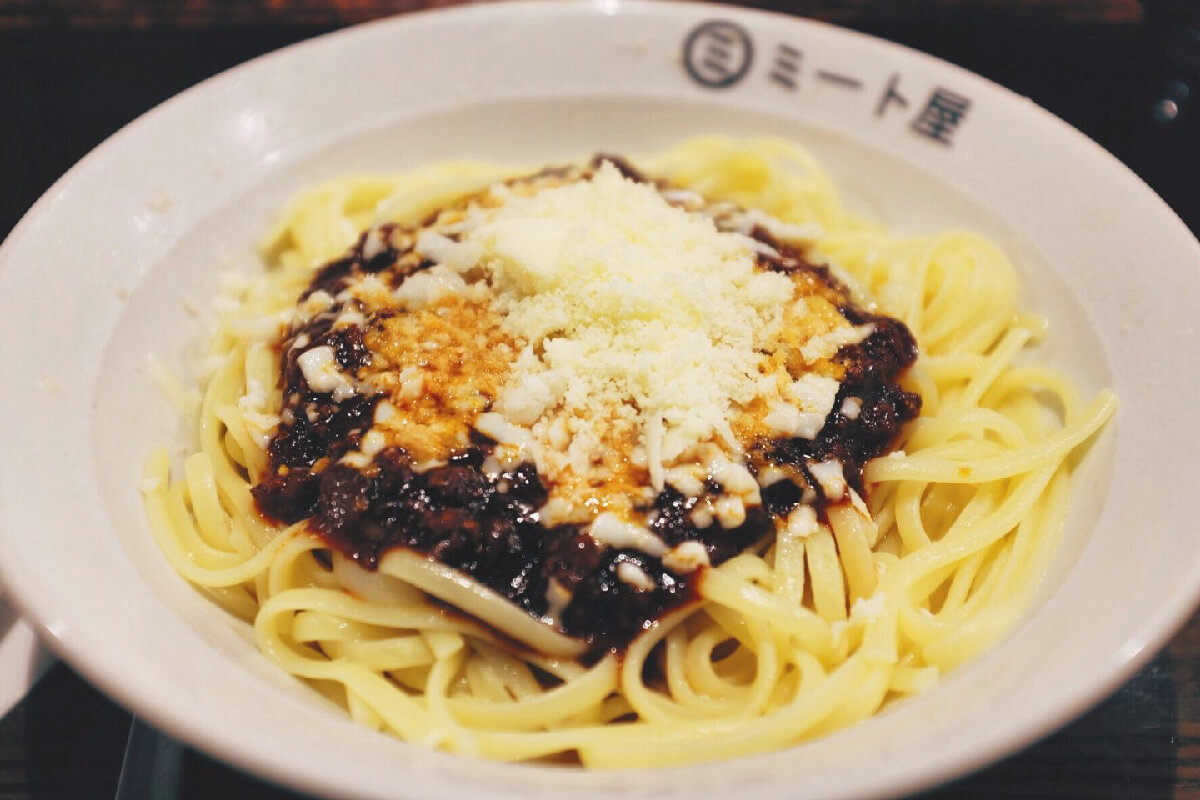For a solid year after coming to Tokyo, I did not stray very far from a diet of Japanese food. Sure, I craved the occasional burger, and I couldn’t go very long without dipping my toes in the Korean gene pool. But I stuck to a steady regiment washoku (Japanese food) for the majority of my meals. My logic was simple: I had just left the West so that I didn’t need to eat any Western food. I was new here, and I wanted to try new things. I wanted to learn as much about the food and the city that I could. And with the elevated sodium levels to prove it, that is what I did.
There came a time though, that I wasn’t new here anymore. My time in Tokyo was no longer so transitory, and my acute memories of life and food in the West began to fade. Once I let go of the feeling that I was wasting time by eating food that I could find in the States, I started to give into my cravings. At first this led to more burgers and a few weird experiments in the kitchen, but in the long run it took me to a tiny shop in the Asagaya neighborhood called Meat-o-ya.
In the States, most restaurants offer a variety of dishes; In Japan, they focus on one particular thing and to do that one thing exceptionally well. Yakitori shops do not also make curry. Ramen shops do not dabble in udon. You do not go out for tempura with the hope of also eating sushi. Colors are always kept inside the lines.
It is in that philosophy that Meat-o-ya or Meat Shop, in English, serves just one thing: spaghetti with meat sauce. That’s it. One sauce and one noodle. It is a culinary aestheticism that is de rigueur in Tokyo’s best ramen shops, but it is not something one sees in Italian eateries. In that same vein, there are no checkered tablecloths and no menus resplendent with Italy’s greatest hits either. There is a counter and a ticket machine. You can pick from a set of sizes (as apportioned by noodle weight) and a handful of toppings (mozzarella cheese and fried eggplant are nice additions; a large dollop of whipped natto, maybe not as much). As with everywhere else, if you wanted something else, you wouldn’t have come here in the first place.
When I first walked by, I thought it was a little preposterous. Still locked inside my washoku blinders, I could not quite compute a place that only served spaghetti with meat sauce, especially one that looked like a ramen shop. I had been recently burned by “tomato ramen,” and was not prepared for some accident of fusion to trick me again.
Once my curiosity overpowered my pretentiousness, I went by again. I learned that I had not just been ignorant—I had also been foolish. This was a perfect bowl of pasta. Three bites in and the memories of every weeknight supper of spaghetti and meat sauce I had eaten growing up flooded my brain. Except this was better, much better. As I twirled fork in spoon, all of my weird airs about eating in Tokyo started to melt away. Of course the Italian food could be great in Tokyo—especially when the noodles are made right behind the counter and cooked with the precision normally accorded to ramen. The rest of the dish was assembled with similar care: a cook tossed the noodles in a hot bowl with a fat scoop of butter and parmesan; poured on the meat sauce, deep and burgundy from three days of slow stewing; and finished with an etching of fresh cream.
It satisfies in a way that most noodles in Tokyo do not. Much of ramen’s meatiness is made by inference or tangential. The soup is enriched by meat and bones, but they aren’t floating in the broth. Toppings like roast pork or chicken can make up for that absence, but they are cooked separately and added after. They might play nicely together, but they’re playing for harmony, not passion. The meat sauce at Meat-o-ya, though, is playing for passion. It’s bawdy and unambiguous. It’s a Miles Davis album, all dark colors and funky horns. It swings low. Heavy. Down there in the extra belt-notch section of the stomach. It hits notes on the register that ramen, soba, and udon don’t have in their vocabulary. It flawlessly demonstrates the idea that much of the food that travels to Japan is not just well preserved, but somehow made better. You don’t come to Tokyo thinking you’ll want to eat spaghetti bolognese, but you should.
There came a time though, that I wasn’t new here anymore. My time in Tokyo was no longer so transitory, and my acute memories of life and food in the West began to fade. Once I let go of the feeling that I was wasting time by eating food that I could find in the States, I started to give into my cravings. At first this led to more burgers and a few weird experiments in the kitchen, but in the long run it took me to a tiny shop in the Asagaya neighborhood called Meat-o-ya.
In the States, most restaurants offer a variety of dishes; In Japan, they focus on one particular thing and to do that one thing exceptionally well. Yakitori shops do not also make curry. Ramen shops do not dabble in udon. You do not go out for tempura with the hope of also eating sushi. Colors are always kept inside the lines.
It is in that philosophy that Meat-o-ya or Meat Shop, in English, serves just one thing: spaghetti with meat sauce. That’s it. One sauce and one noodle. It is a culinary aestheticism that is de rigueur in Tokyo’s best ramen shops, but it is not something one sees in Italian eateries. In that same vein, there are no checkered tablecloths and no menus resplendent with Italy’s greatest hits either. There is a counter and a ticket machine. You can pick from a set of sizes (as apportioned by noodle weight) and a handful of toppings (mozzarella cheese and fried eggplant are nice additions; a large dollop of whipped natto, maybe not as much). As with everywhere else, if you wanted something else, you wouldn’t have come here in the first place.
When I first walked by, I thought it was a little preposterous. Still locked inside my washoku blinders, I could not quite compute a place that only served spaghetti with meat sauce, especially one that looked like a ramen shop. I had been recently burned by “tomato ramen,” and was not prepared for some accident of fusion to trick me again.
Once my curiosity overpowered my pretentiousness, I went by again. I learned that I had not just been ignorant—I had also been foolish. This was a perfect bowl of pasta. Three bites in and the memories of every weeknight supper of spaghetti and meat sauce I had eaten growing up flooded my brain. Except this was better, much better. As I twirled fork in spoon, all of my weird airs about eating in Tokyo started to melt away. Of course the Italian food could be great in Tokyo—especially when the noodles are made right behind the counter and cooked with the precision normally accorded to ramen. The rest of the dish was assembled with similar care: a cook tossed the noodles in a hot bowl with a fat scoop of butter and parmesan; poured on the meat sauce, deep and burgundy from three days of slow stewing; and finished with an etching of fresh cream.
It satisfies in a way that most noodles in Tokyo do not. Much of ramen’s meatiness is made by inference or tangential. The soup is enriched by meat and bones, but they aren’t floating in the broth. Toppings like roast pork or chicken can make up for that absence, but they are cooked separately and added after. They might play nicely together, but they’re playing for harmony, not passion. The meat sauce at Meat-o-ya, though, is playing for passion. It’s bawdy and unambiguous. It’s a Miles Davis album, all dark colors and funky horns. It swings low. Heavy. Down there in the extra belt-notch section of the stomach. It hits notes on the register that ramen, soba, and udon don’t have in their vocabulary. It flawlessly demonstrates the idea that much of the food that travels to Japan is not just well preserved, but somehow made better. You don’t come to Tokyo thinking you’ll want to eat spaghetti bolognese, but you should.

